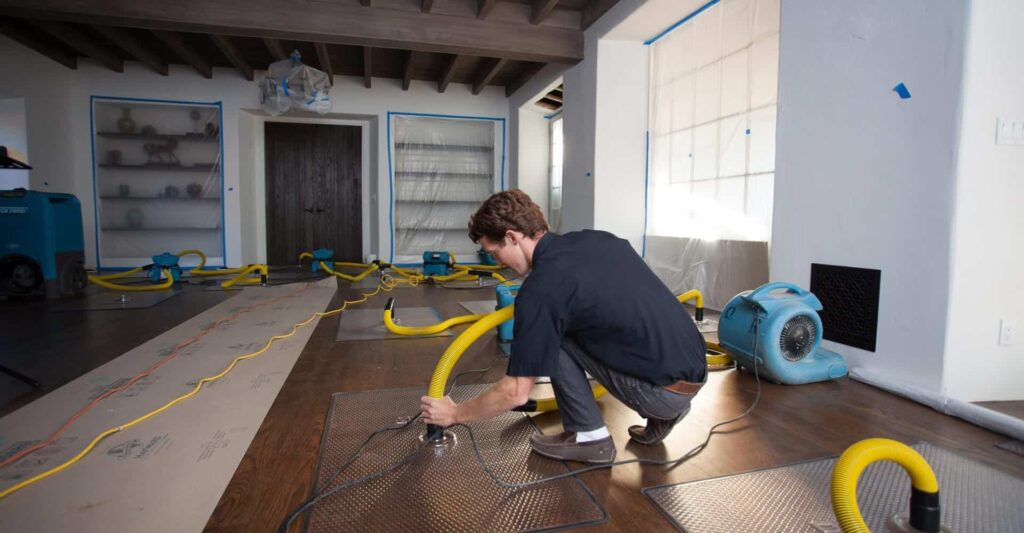A homeowner’s biggest fear can come true when water destroys their property and causes them emotional and financial misery. The aftermath of water damage, whether from floods, broken pipes, or leaks, can be difficult to overcome and has far-reaching effects. However, with the right strategies and approach, it’s possible to defeat dampness and restore affected areas effectively. In this article, we’ll explore various strategies for successful water damage restoration, from initial assessment to final repairs.
Knowing How Severe The Water Damage Is:
It is critical to assess the extent of the water damage before beginning restoration procedures. Not all water damage is the same, and its classification can vary depending on the source, extent, and duration of exposure. Water damage can be categorized into three basic types according to the Institute of Inspection, Cleaning, and Restoration Certification (IICRC):
Clean Water (Category 1):
This form of water damage starts with potable water and comes from places like burst pipes or an overflowing sink. It poses minimal risk to human health if addressed promptly.
Grey Water (Category 2):
There are toxins in grey water that could make you sick if you drink it. It typically comes from sources like dishwashers, washing machines, or sump pump failures.
Black Water (Category 3):
The most severe type of water damage, black water is highly contaminated and can pose significant health risks. It often results from sewage backups, flooding from rivers or streams, or stagnant water sources.
Assessment And Inspection:
An exhaustive evaluation and examination of the impacted regions should follow the determination of the nature and level of water damage. This process involves identifying all areas of moisture intrusion, assessing structural damage, and documenting the findings for insurance purposes.
During the inspection, trained professionals use specialized equipment such as moisture meters, thermal imaging cameras, and hygrometers to detect hidden moisture pockets and assess the extent of water damage. An efficient restoration strategy that is customized to the property’s individual needs requires this thorough study.
Water Extraction And Drying:
The next step, after evaluation, is to remove any remaining water and dry the material. Preventing more damage and reducing the possibility of mold growth requires the immediate clearance of standing water. Industrial-grade pumps, wet vacuums, and dehumidifiers are utilized to remove any remaining water from the afflicted surfaces.
Once the excess water has been removed, the d-yang process begins. To speed up the process of evaporation and eliminate humidity, powerful air movers and dehumidifiers are position d in specific areas. Depending on the level of water damage and the surrounding conditions, this stage could take a few days or even weeks.
Mold Remediation:
Mold development is among the most serious dangers that can result from water damage. Mold can start to grow within 24 to 48 hours after coming into contact with water, as it is in damp conditions. Therefore, swift action is essential to prevent mold from spreading and causing further damage.
Mold remediation involves removing visible mold growth and addressing underlying moisture issues to prevent regrowth. Specialized techniques such as containment barriers, HEPA filtration, and antimicrobial treatments may be employed to ensure thorough mold removal and prevent future contamination.
Structural Repairs And Restoration:
Once the affected areas have been thoroughly dried and cleaned, the final phase of water damage restoration involves structural repairs and restoration. This may include replacing damaged drywall, insulation, flooring, and other building materials, as well as repairing or replacing compromised plumbing systems.
To securely and efficiently restore the property to its pre-loss condition, meticulous attention to detail is essential throughout the restoration process. This may involve coordinating with contractors, electricians, and other tradespeople to complete the necessary repairs and renovations.
Conclusion:
Water damage is a nightmare for homeowners, but with the right tools and techniques, it is possible to restore homes that have been affected by water. By understanding the different types of water damage, conducting thorough assessments, and implementing effective restoration techniques, professionals can help homeowners navigate the challenges of water damage and reclaim their homes with confidence. With prompt action and expert guidance, defeating dampness is within reach, allowing homeowners to move forward and rebuild after a water-related disaster.

